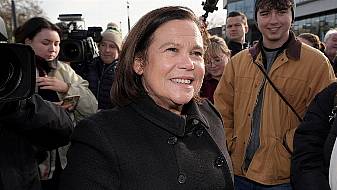New data shows that there appears to be a levelling off in the public-private sector pay differential.
Data published by the Central Statistics Office (CSO) shows that between 2019-2022 there was no clear trend to the public-private pay differential.
However, the CSO said there does appear to be a levelling off in the public-private sector pay differential from 2016 with slight reductions from 2018-2020.
Figures have generally remained stable over this period with minor fluctuations, according to the CSO.
The Public-Private Pay Differential on average ranges from 0.9% to - 6.6% in 2022https://t.co/qCprlx9t5a#CSOIreland #Ireland #LabourForceSurvey #LabourForce #Households #Families #IrishFamilies #IrishHouseholds #LabourMarket #Jobs #Employment #Unemployment #PayDifferential pic.twitter.com/i0UQrJmaiZ
Advertisement— Central Statistics Office Ireland (@CSOIreland) May 7, 2024
Due to the impacts of Covid-19 on the labour market and earnings from 2020-2022, the CSO said it is too early to see if further reductions in the public-private pay differential are a definitive trend during this period.
The research paper presents an econometric analysis of the public-private sector pay differential for the period 2019 to 2022.
Darragh Turner, statistician in the Earnings Analysis Division, said that due to the “complex nature” of measuring the public-private pay differential, four different estimates are presented in its paper.
“In the international literature there is no clear uniform method for producing the public-private pay gap, hence, there are a number of methods incorporated in this paper,” Mr Turner added.
“This ranges from the models used, in this case Ordinary Least Squares (OLS) Regression and Quantile Regression, and also what is included and excluded in the model specifications, i.e. size of enterprise and additional superannuation contribution.”

The OLS regression is a statistical method used to estimate the relationship between one or more independent variables, such as occupation, education or nationality and a dependent variable – for example, weekly gross pay.
Quantile regression is similar to OLS regression, but instead of predicting the mean of the dependent variable, it predicts specified quantiles.
Models including and excluding size of enterprise as a wage determining characteristic are presented and gross weekly earnings as well as weekly earnings after the deduction of the additional superannuation contribution are considered.
Including and excluding size of enterprise from the models had a significant effect on the pay differential, according to the CSO.
When size of enterprise is included, the public sector discount ranges from minus 4.4 per cent to minua 6.6 per cent in 2022.
With size of enterprise excluded, the public sector differential ranges from a premium of 0.9 per cent to a discount of minus 1.4 per cent in 2022.
The size of the pay differential in the public sector was higher for women than for men, meaning women in the public sector have a higher pay differential than men in the public sector when compared to their private sector counterparts.
When comparing the public and private sector for 2022, the pay differential for men employees in the public sector ranged from a discount of minus 4.5 per cent to a discount of minus 11.0 per cent, depending on the specification used in the model.
The corresponding differential for women showed that women workers in the public sector had a differential ranging from a premium of 6.7 per cent to a discount of minus 2.2 per cent depending on the specification used in the model.







